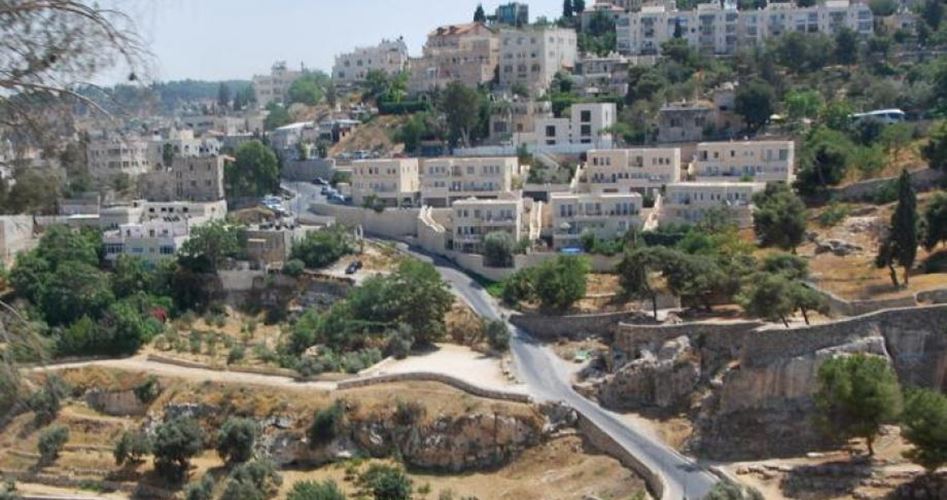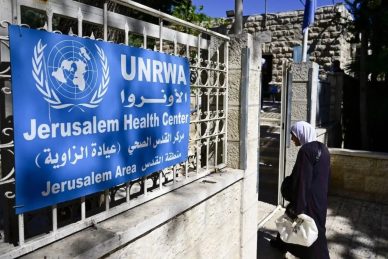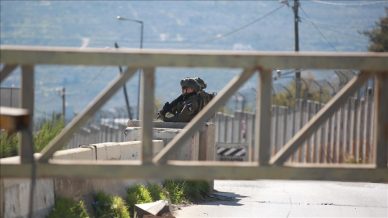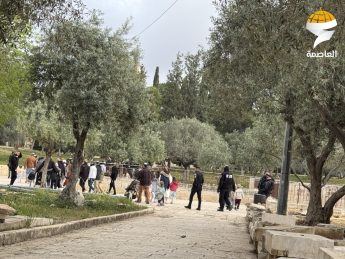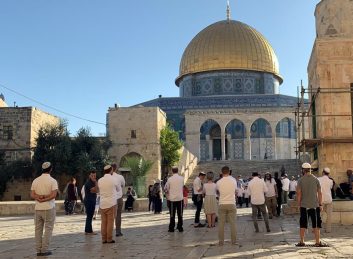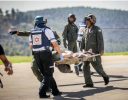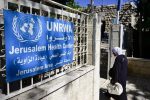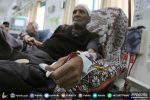800 Jerusalemites resist the Judaization and settlement activity with their steadfastness in Wadi al-Rababa in Silwan town to the south of the Al-Aqsa Mosque in Occupied Jerusalem.
Wadi al-Rababa’s area is estimated at around 210 dunums and its residents challenge the policies of the Israeli occupation authority (IOA) and its settlers aimed at expelling them from their lands.
The IOA seeks to gain control of Wadi al-Rababa to implement a number of settlement projects and plans most notably the Skybridge project. This project starts from Al-Thawri neighborhood passing through the Wadi al-Rababa neighborhood reaching the Nabi Daoud area.
The IOA plans to implement other works in the neighborhood’s land and transfer it into biblical paths and gardens.
Vulnerable area
Nasser Al-Hudmi the expert on Jerusalem affairs confirms that Wadi al-Rababa is an extension of the Silwan area near the Al-Aqsa Mosque.
Hudmi indicated in a statement to the PIC that the IOA is focusing on the Wadi al-Rababa area because it is close to the Al-Aqsa Mosque and it is considered a vulnerable area.
He explained that many lands in Wadi al-Rababa area have unclear ownership and the proof of ownership is not documented properly. Therefore the IOA targets it by demanding that the people of the neighborhood bring proof of ownership. If the lands’ ownership is not proven or not officially registered the IOA will convert these lands to a state of the Absentee property. This will transfer the property of the lands to the settlement associations for settlement construction.
He emphasized that the IOA wants to enter from this area to penetrate the Jerusalem neighborhoods and break them up through building outposts. This will enable Israel to control the city and prevent the Jerusalem community from integration and interdependence.
Wadi al-Rababa is called by this name because its area is narrowed from the top and begins to expand gradually towards the bottom. It is similar to the ancient Arab musical instrument Rababa.
The neighborhood’s name is different from its old one. In the Canaanite period the valley was called Hell Valley. The elderly Jerusalemites call it the Haram land as it is the dividing line between the eastern and western parts of the city.
The Wadi al-Rababa neighborhood is considered sacred in all religions. It overlooks al-Rahma Gate which Muslims turned into a cemetery. It also overlooks a cemetery for Christians and a cemetery for Jews in addition to an old pagan cemetery dating back to the Pharaonic era.
The incursions and leveling actions in the Wadi al-Rababa are an extension of what happened in the Al-Bustan area in Silwan of demolishing homes in a bid to empty the area.
The IOA distributed demolition notices to owners of 80 houses claiming that these houses were built on lands with unclear ownership or that they were unlicensed.
Wadi al-Rababa neighborhood is the remaining area for Silwan’s people to build homes and schools and construct parks. However the IOA refuses to issue licenses for them and it prosecutes residents when building or expanding or even cultivating their land.
Judaization scheme
Hanna Issa Secretary-General of the Christian-Islamic Committee says that the Wadi Rababa neighborhood is an integral part of the Holy City’s land in addition to the other valleys.
Issa told the PIC that the IOA is now planning to establish what is called Greater Jerusalem on an area of 600 square kilometers. It aims to Judaize the city create a new Jewish character and establish Greater Jerusalem.
He explained that the IOA began its plans in Wadi Al-Joz Wadi Rababa and other neighborhoods of Jerusalem. The IOA is exerting various pressures on the residents of Silwan and is working on the massive demolition of its neighborhoods to empty it of its people expand existing settlement outposts and establish new Jewish neighborhoods in line with its plan of Greater Jerusalem.
“We as Palestinians have to think about how to change the rules of confrontations with the IOA on new basis. There must be a new thinking a new struggle and well-founded national unity and the collective efforts of all Palestinians” Issa noted.

